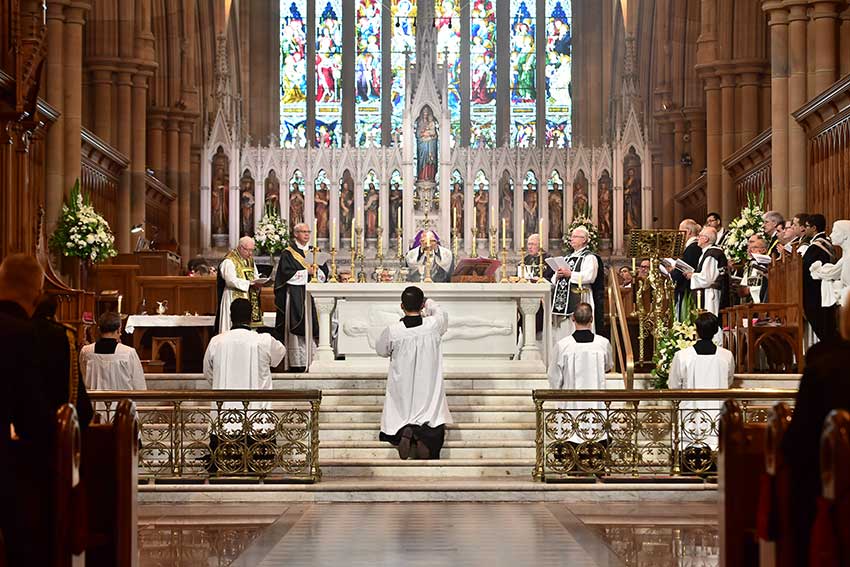
It was a time of controversy, reform and backlash, liturgy wars, calls for more vernacular language at Mass and in the Scriptures, and anxiety that the faith would be polluted by dangerous “isms.”
It wasn’t the 20th century, but the 17th and 18th—the tail end of the “early modern” period, which started with the Reformation beginning in 1517, and ended with to the French Revolution in 1789.
Dr Shaun Blanchard, an expert on the period and co-author of Vatican II: A Very Short Introduction, will trace the origins of the Second Vatican Council’s reform of the Mass to this tumultuous period in the second of four lectures commemorating 60 years since the council’s Constitution on the Sacred Liturgy, Sacrosanctum Concilium.
The lecture series has been organised by the Archdiocese of Sydney’s Liturgy Office with the University of Notre Dame, Australia.
Catholic history often remembers the early modern period as a “list of bad ‘isms,’ a litany of negative things the church had to condemn.”
“The Enlightenment, Jansenism, Gallicanism, Josephinism, on and on—there’s five or six more ‘isms’ I could name,” Dr Blanchard said.
“This is really the result of a reaction and a backlash in the 19th and early 20th centuries … I don’t think it’s true to the actual sources themselves, which are vibrant and diverse and interesting.”
Leading Catholic theologians of the ressourcement, the retrieval of the church fathers in the early 20th century that laid the groundwork for Vatican II, were aware of some of these sources.
Dr Blanchard singles out the Italian priest Ludovico Muratori, who died in 1750, and was most famous for having discovered the “Muratorian fragment,” the earliest known list of canonical scriptures.
“He had a vision of liturgical reform based on his reading of the church fathers, what we would call a patristic ressourcement, a biblical ressourcement, and also the liturgical sources themselves,” he said.
His 1747 text, On the Regulated Devotion of a Christian, was considered the “magnum opus of an enlightened Catholic” in its proposals, which sought to move Christians away from superstition and put the focus on Christ.
“He puts the text of the Mass, the canon of the Mass, into Italian,” Dr Blanchard said.
“There are people who want to condemn this, but he happened to be friends with the pope of the time, Benedict XIV, who protects him from condemnation.
“His ideas begin to be widely circulated in the Christian world. The book is translated into every major European language, goes through 20 editions in the Holy Roman Empire, the German empire alone.”
Dr Blanchard’s lecture will trace a line through this exciting and complex period, and show its enduring relevance to Vatican II, the council’s liturgical constitution, and its implementation in the liturgical reforms of St Paul VI.
“The historic record really supports what Pope Benedict XVI called the ‘hermeneutic of reform,’ which is an acknowledge of continuity and discontinuity on different levels,” he said.
“A very important thread of continuous theological and pastoral concerns that are rooted in scripture, rooted in the patristic period, and have an organic continuation through the centuries; nevertheless there are some clear discontinuities in pastoral practice, theological method, in how certain liturgical rites are conduct.
“That can be reconcilied in a way that’s faithful to a deeper continuity of principles, as Ratzinger would say.”
Any Catholic who wishes to understand the origins of the Second Vatican Council’s reforms of the Mass will benefit from Dr Blanchard’s lecture, which is not just for academics.
“Reflecting on this longer history has something for everyone, if you will,” he said.
“It can defuse triumphalist narratives coming from ‘left’ or ‘right.’
“It can add a sense of humility to a linear ‘march of progress’ story, that you might get from a ‘progressivist’ paradigm.
“But it can also defuse a certain ‘decline and fall’ or ‘chain of errors’ narrative you might get from a traditionalist paradigm.”
The lecture will take place at the University of Notre Dame’s Broadway campus on 15 November at 6pm.
